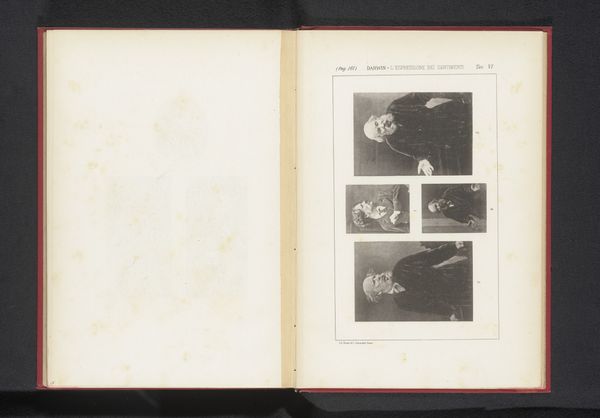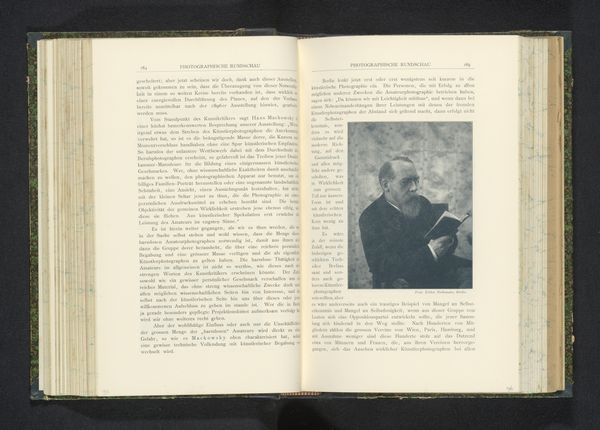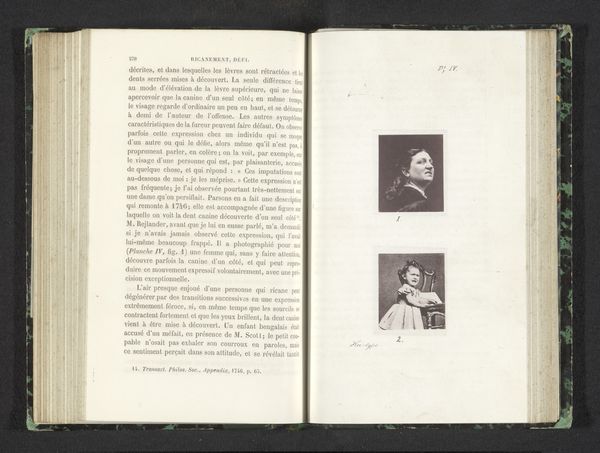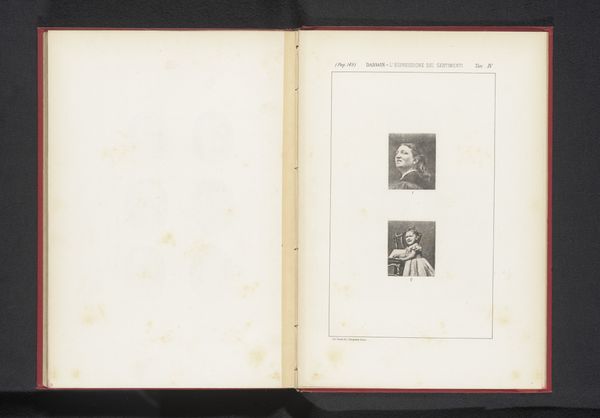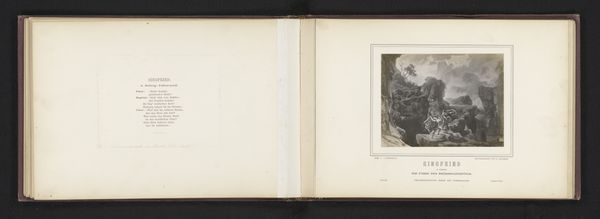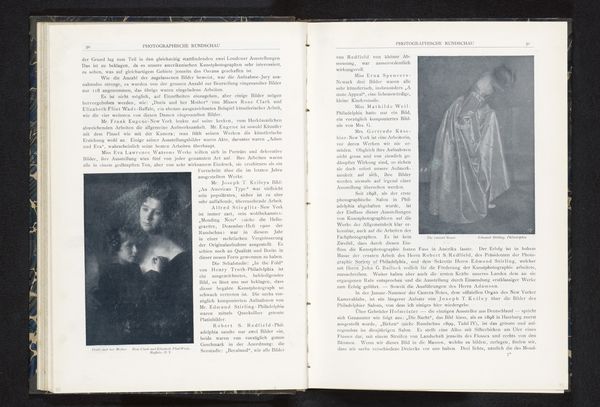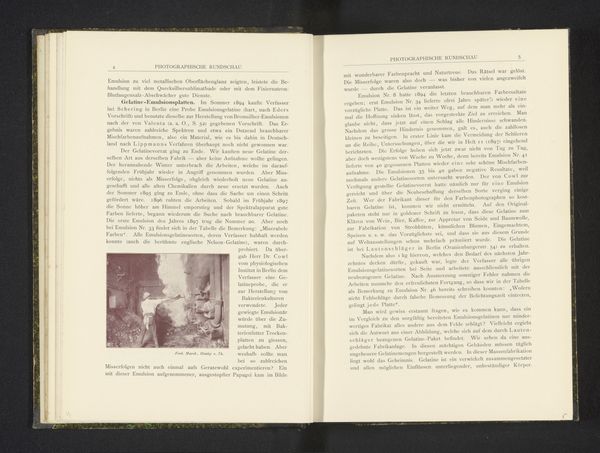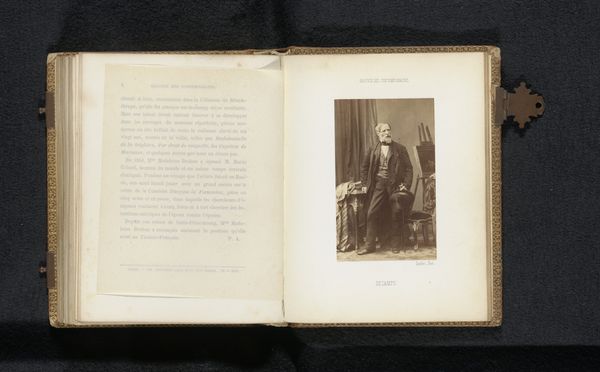
print, photography
#
portrait
# print
#
photography
#
history-painting
Dimensions: height 211 mm, width 272 mm
Copyright: Rijks Museum: Open Domain
Curator: What a striking study in emotions! This photogravure, "Vier mannen, gerangschikt van woede naar overgave," offers a fascinating insight into human expressions, before 1874, created by an anonymous author. It’s currently presented as part of a book. What stands out to you immediately? Editor: Four studies of the same face, really? My first thought? Theatre! There’s a theatricality here, isn't there? Almost like exaggerated emotional exercises. I immediately get a sense of performativity; I see how a specific type of portrait may allow for an almost performative mode that has clear intention to reveal interiority through photographic process. What are we looking at? Curator: Exactly, there are so many threads to unravel here! It sits within history painting's tradition, specifically, through printmaking and photography, enabling broad dissemination. If we consider performance in this case, it seems very related to medical study! Consider what role the sitter inhabits, if you will? There are no attributes besides him—I do consider he must play the part for the photographic record. This project can illuminate what that process does when mediated by medical discourse in relationship to identity. Editor: Okay, but can we unpack "medical study" for a minute? Is that written somewhere in this old book's introduction, perhaps, or is it in its tone and in the title's language? Because otherwise, these expressions… I mean, maybe they’re clinical. Maybe. But it's fascinating to watch him shift positions; almost like acting out emotional archetypes for an unseen audience! Is it possible these are simple theatrical portraits for pedagogical resources? The poses strike me as more exaggerated or dramatic in intent than just for medical observation. I notice they include a caption, perhaps from the photographer to the author to note what each subject represents in character! Curator: Well, perhaps what seems "simple" is often anything but. It’s also, from an art historical perspective, worthwhile to consider the context surrounding portraiture in the late 19th century and that of social reform! Here's an artwork where photography is in relation to classification; the man and the patient exist under categories that often have to negotiate what one could term personhood. These expressions are a means, historically speaking, for diagnosis and observation through photography and reproduction. Editor: Diagnosis? Maybe! But maybe we should acknowledge we are interpreting it that way now? Ultimately I see more of the actor’s craft here, a very personal display of self even within clinical intention. It's quite a fascinating portrait series! Curator: Absolutely. There is so much contained within these photographs to consider when exploring identity and image-making and its impact in visual culture. I see his potential suffering, and through that, maybe there is empathy or a shared catharsis... It's complex. Editor: Definitely. Well, I am intrigued! Next?
Comments
No comments
Be the first to comment and join the conversation on the ultimate creative platform.

